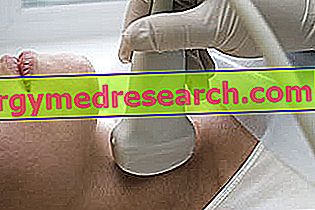HUMULIN I ® a drug based on human isophane insulin
THERAPEUTIC GROUP: Human isophane insulin for injectable use - insulins and analogues
IndicationsAction mechanismStudies and clinical effectiveness Usage and dosage instructionsWarnings Pregnancy and lactationInteractionsContraindicationsUndesirable effects

Indications HUMULIN I ® - Human isophane insulin
HUMULIN I ® is indicated in the treatment of diabetes mellitus that requires insulin therapy, in gestational diabetes in the initial control of diabetic disease.
Mechanism of action HUMULIN I ® - Human isophane insulin
HUMULIN I ® is a drug based on human insulin obtained in the laboratory through recombinant DNA technology and complexed with protamine sulfate or other suitable protamine, which allows an extension of the time of action of this type of hormone, influencing timing and how the drug is absorbed.
In general, isophane insulin, also called insulin NPH (Neutral Protamin Hagedorn), has a latency time of about 2 hours, a peak of hypoglycemic activity at 6-8 hours from subcutaneous administration and a total duration of the therapeutic effect of about 18-24 hours, with important inter-individual variability.
After leaving the subcutis, insulin enters the circulation, binding to specific receptors endowed with intrinsic Tyr-kinase activity expressed by insulin-sensitive cells such as muscle and adipose cells, thus increasing blood glucose uptake and promoting biosynthetic processes such as glycogen syntesis, protein and lipid synthesis.
However, the hypoglycemic effect of insulin is also mediated by the important metabolic activity carried out at the hepatic level, a fundamental metabolic crossroads in organic homeostasis, useful for reducing glucose production and circulation through the inhibition of glycogenolysis processes, lipolysis and gluconeogenesis.
Studies carried out and clinical efficacy
1. INSULIN THERAPY AND WEIGHT INCREASE
An interesting study conducted on the diabetic population that demonstrates how insulin therapy with isophane insulin can guarantee a significant increase in weight, greater than that induced by other analogues, without however worsening the cardiovascular health status.
2. INSULIN ISOPHANE OR GLARGEN INSULIN?
Isophane insulin and insulin glargine, although distinct from the amino acid sequence and the absorption system, share more or less the same timing with a prolonged therapeutic activity of about 20 hours. However, this study appears to find an insulin analogue with the best therapeutic efficacy in insulin glargine.
3. GLARGEN INSULIN AND NPH INSULIN COMPARED IN THE PEDIATRIC POPULATION
This very interesting study conducted on pediatric diabetic patients shows how the administration of insulin glargine can, compared to the administration of NPH insulin, guarantee a better glycemic control in a 12-month treatment, significantly reducing the levels of glycosylated hemoglobin.
Method of use and dosage
HUMULIN I ® 100 IU / ml of human isophane insulin in 10 ml bottles, 3 ml cartridges or 3 ml pre-filled pens:
isophane insulin is an intermediate-acting insulin analogue, so its intake is usually accompanied by regular or rapid insulin administration in conjunction with main meals.
Given the complex structure of therapy, dosages and relationships vary significantly from patient to patient, based on their needs and therapeutic needs.
Therefore the correct dosage formulation should be established by the doctor, after a careful evaluation of the physio-pathological conditions and of the glycemic control of the patient.
Warnings HUMULIN I ® - Human isophane insulin
The active participation of the patient is certainly the first step towards the adequate management of diabetic pathology.
It is very important indeed that the patient is adequately instructed by his doctor on the correct way of preparing, storing and injecting insulin, on the potential side effects and on the useful remedies to be put in place to minimize the risk of clinically significant adverse reactions.
The doctor must also, with the participation of the patient, periodically monitor the glycemic levels and eventually adapt the therapy when necessary.
This requirement could also be realized following therapy variation, infectious diseases, surgery, pregnancy and changes in lifestyle and eating habits.
Episodes of hypoglycemia often are accompanied by a reduction in the patient's reactive and perceptive capacities, making it dangerous to use machinery and drive vehicles.
PREGNANCY AND BREASTFEEDING
Human isophane insulin, like other forms of insulin, is currently the only possible therapeutic approach for the treatment of gestational diabetes.
Ensuring good glycemic control during pregnancy is of fundamental importance to safeguard the correct development of the fetus and its vitality.
Interactions
Different active ingredients can alter the normal therapeutic characteristics of insulin, causing significant changes in the hypoglycemic effect of the hormone.
In fact the concomitant intake of oral hypoglycemic agents, octreotide, anti-MAO, beta-blocking agents, ACE inhibitors, salicylates, alcohol and anabolic steroids could potentiate the hypoglycemic effect by increasing the risk of hypoglycemia, while the simultaneous administration of oral contraceptives, thiazides, glucorticoids, thyroid and sympathomimetic hormones could reduce the therapeutic effect of HUMULIN I ®
It is therefore advisable in these cases to consider, with your doctor, a possible adjustment of the dosage to maintain good glycemic control.
It is also useful to remember that sympatholytics can mask some important signs of hypoglycemia, increasing the risk of serious reactions.
Contraindications HUMULIN I ® - Human isophane insulin
HUMULIN I ® contraindicated in case of hypoglycemia and hypersensitivity to human insulin or its excipients.
Undesirable effects - Side effects
Insulin administration can usually be associated with local (injection-site) and systemic disorders of different clinical relevance.
The subcutaneous injection may in some cases be accompanied by the appearance of redness, burning and transient itching during inoculation and lipoatrophy in the absence of adequate rotation of the puncture areas.
Among the systemic effects, the gastro-intestinal, visual or cutaneous hypersensitivity disorders are more rare, while the hypoglycemic condition deserves special attention.
This could manifest itself with typical signs such as chills, tremors, cold sweats, palpitations, drowsiness and rapidly evolving towards unconsciousness and coma.
It is therefore advisable that the diabetic patient brings with him a sugar source of rapid assumption, to quickly cope with the aforementioned condition.
These insulin analogues may increase the risk of systemic hypersensitivity, prompting the physician to change therapy.
Note
HUMULIN I ® sold only under medical prescription.
HUMULIN I ® is in the doping class: Hormones and related substances (prohibited in and out of the race)



